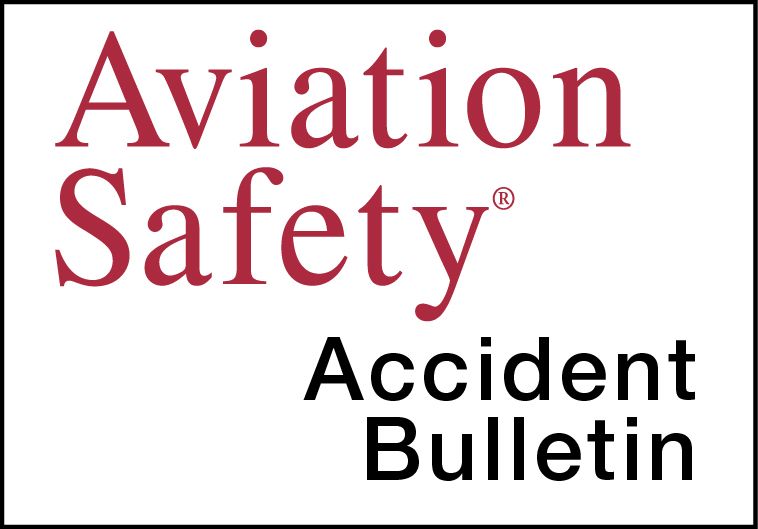AVweb’s General Aviation Accident Bulletin is taken from the pages of our sister publication, Aviation Safety magazine. All the reports listed here are preliminary and include only initial factual findings about crashes. You can learn more about the final probable cause on the NTSB’s website at www.ntsb.gov. Final reports appear about a year after the accident, although some take longer. Find out more about Aviation Safety at www.aviationsafetymagazine.com.
February 8, 2021, Galt, MO
Cessna 177RG Cardinal RG
At about 1442 Central time, the airplane was destroyed when it collided with terrain while flying at low altitude. The pilot and passenger were fatally injured. Instrument conditions prevailed; no flight plan had been filed.
After it arrived at the accident flight’s departure point, witnesses observed the airplane’s windscreen was completely obscured by ice, which also was present on the rest of the airplane, about a ¼-inch thick. The airplane was put in a heated hangar to melt the ice, and fuel was added. Witnesses later said the pilot dismissed recommendations to stay until the weather improved.
According to ADS-B data, the airplane departed at about 1410 and flew north about 30 miles, turned northwest for about 40 miles, and then flew west-southwest for about six miles until the data ended at 1440. During the flight, the airplane flew no higher than 1900 feet MSL before beginning a gradual descent. The data ended with the airplane at 1200 feet; terrain along the route of flight varied between about 750 feet and 950 feet msl. The accident site’s elevation was about 785 feet MSL and located about seven miles west of the last recorded ADS-B datapoint. Nearby weather at 1355 included visibility of 1¾ statute miles, scattered clouds at 600 feet AGL, a broken ceiling at 1500 feet AGL and an overcast at 2700 feet AGL. Temperatures and dewpoints were below freezing.
February 13, 2021, San Diego, Calif.
Dassault Falcon 900EX
The airplane was substantially damaged at about 1150 Pacific time in a runway overrun event following an aborted takeoff. The two pilots, one additional crew member and two passengers were not injured.
Reportedly, the flight crew was unable to raising the nose of the airplane at rotation speed, VR. The crew subsequently aborted the takeoff but was unable to stop, coming to rest approximately 560 feet beyond the departure end of the runway.
February 13, 2021, Tehachapi, Calif.
Piper PA-46R-350T Matrix
At about 1627 Pacific time, the airplane was destroyed when it collided with terrain. The solo pilot was fatally injured. Marginal visual conditions prevailed on the surface at a nearby airport.
Preliminary tracking data reveal the airplane flew northeast and climbed to about 10,000 feet MSL. About 20 minutes into the flight, the airplane’s groundspeed decreased, followed by a descent to about 8000 feet. The track continued for about 12 minutes before radar contact was lost. The final portion of the track showed the airplane in a steep descending left spiral. A G-AIRMET Tango for turbulence and a Center Weather Advisory for severe turbulence below 15,000 feet were in effect. Examination revealed all of the airplane’s flight controls were found at the accident site.
February 16, 2021, Janesville, Wis.
Velocity V-Twin Experimental
The airplane was substantially damaged at about 0917 Central time when it collided with terrain shortly after its crew reported an engine problem and attempted to return to the departure airport. Both pilots sustained fatal injuries. Visual conditions prevailed for the FAA-approved ferry flight.
Data obtained from ADS-B showed the airplane took off at about 0912. About one minute and 16 seconds after takeoff clearance was issued, one of the pilots stated that they would like to circle back and land to “work through some engine issues.” When ATC asked if any assistance was required, the pilot replied, “No sir, we should be fine.” No further radio communications were received.
The airplane impacted trees and came to rest inverted in a waterway about one mile south of the departure airport. The air traffic controller on duty saw the airplane south of the airport just prior to impact. He stated he saw the airplane begin to circle left and, about halfway through the circle, the bank angle increased and the nose of the airplane “was almost pointed down toward the ground.”
This article originally appeared in the May 2021 issue of Aviation Safety magazine.
For more great content like this, subscribe to Aviation Safety!



































